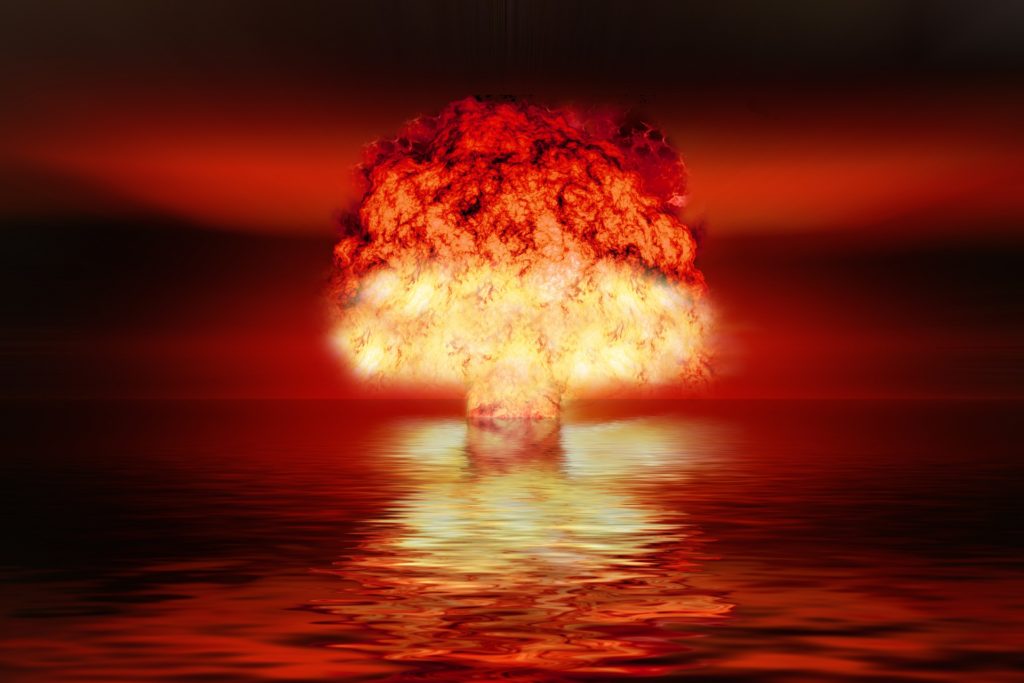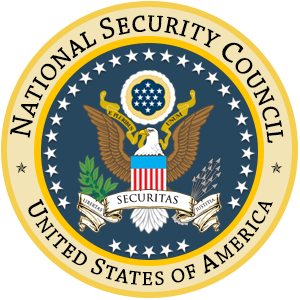
In a recent post, I mentioned the Congressional debate over authorizing and funding the use of “low-yield” or usable nukes, which has many worried that the threshold for the utilization of nuclear weapons would be significantly lowered. On June 11th, the Pentagon released its new policy doctrine on war fighting. As Antiwar.com noted, the U.S. has had a difficult time achieving anything resembling military victory in its numerous wars after 9/11 against much less technologically advanced adversaries, so now it appears that the Joint Chiefs of Staff are considering the use of nuclear weapons.
Experts and observers are worried that this is another attempt to get the idea of using nuclear weapons accepted in conflicts where nuclear weapons have not been used first by the opponent – indeed the opponent may not even possess them. According to The Guardian the doctrine was inspired by the theories of Cold War ideologist Herman Kahn, who is believed to have been the inspiration for the iconic Dr. Strangelove character:
The document, entitled Nuclear Operations, was published on 11 June, and was the first such doctrine paper for 14 years. Arms control experts say it marks a shift in US military thinking towards the idea of fighting and winning a nuclear war – which they believe is a highly dangerous mindset.
“Using nuclear weapons could create conditions for decisive results and the restoration of strategic stability,” the joint chiefs’ document says. “Specifically, the use of a nuclear weapon will fundamentally change the scope of a battle and create conditions that affect how commanders will prevail in conflict.”
At the start of a chapter on nuclear planning and targeting, the document quotes a cold war theorist, Herman Kahn, as saying: “My guess is that nuclear weapons will be used sometime in the next hundred years, but that their use is much more likely to be small and limited than widespread and unconstrained.”
Within a week, the document was removed from the Pentagon’s website, but not before it was downloaded and copied by Steven Aftergood at the Federation of American Scientists (FAS), which has made the document available on its website (linked to above under “Nuclear Operations.”)
As Common Dreams added in its reporting on the Pentagon document, the Stockholm International Peace Research Institute just released a report pointing out the dangers of the new arms race – estimated at a cost of trillions of dollars – between the world’s nuclear superpowers:
FAS’s publication of the Pentagon document comes just days after the Stockholm International Peace Research Institute (SIPRI) released a report (pdf) on the state of military armaments and weaponry across the world. SIPRI found that “despite an overall decrease in the number of nuclear warheads in 2018, all nuclear weapon-possessing states continue to modernize their nuclear arsenals,” making nuclear conflict more likely than the year before.
Earlier this week, a joint poll by YouGov and the Bulletin of the Atomic Scientists revealed that 1 in 3 Americans would support a preemptive nuclear strike on North Korea if the U.S. discovered that the country had developed a nuclear missile capable of reaching the continental U.S. One could view this as positive that 2/3’s of Americans would not support such an atrocity, but the fact that 1 out of every 3 of my fellow Americans – 1 out of 3 of my neighbors, fellow bus passengers or co-workers – would support it is chilling, especially when the polling found that a significant number would support such a strike even if it killed up to a million North Korean civilians. In reality, it would likely kill many more outside of North Korea if you factor in the effects of nuclear winter, which doesn’t require a lot of nukes to trigger.
The significance of this is brought home to me all the more since I’m at the point in my book where I’m researching the 1962 Cuban Missile Crisis in depth. During that time, average Americans had more of a consciousness of the dangers of nuclear weapons. The dropping of the atomic bombs on Japan was within most adults’ living memory and the fact that an arsenal of much more powerful atomic weapons was in the possession of the two superpower rivals was known and discussed in the news and stories about its dangers were regularly seen in popular culture (the novel and film On The Beach and episodes of The Twilight Zone, for example).
But we don’t seem to have that consciousness – and the fear and disgust that should go along with it – anymore. This, despite the fact that those dangers have not gone away. Both the U.S. and Russia still have over 1,700 nuclear weapons combined on hair trigger alert. With so much antipathy, rancor and distrust having been recklessly stoked by the political class and much of the media toward Russia over relatively minor (and/or false) issues in the big picture – yes, they are minor in the big picture of a nuclear holocaust – don’t give a lot of reason for optimism if a radar error, renegade launch or some escalation spins out of control.
We survived the Cuban Missile Crisis because Kennedy and Khrushchev both had the courage and were allowed the political maneuvering (whatever previous mistakes they both made that led to the confrontation) to hold back their respective hardliners who encouraged escalation. Eyewitness accounts also reveal that both Kennedy and Khrushchev felt visceral fear in the face of what they might unleash. But a remarkably large part of the reason we survived also had to do with dumb luck as historians (and two of the foremost experts on the Cuban Missile Crisis) James Blight and Janet Lang make clear in their 2018 book, Dark Beyond Darkness: The Cuban Missile Crisis as History, Warning and Catalyst.
Blight and Lang have calculated that if the crisis were run 100 times with the same conditions, 95 times it would end in nuclear war.
With the U.S. now having unilaterally abrogated 2 of the 3 nuclear arms control treaties governing the U.S. and Russia’s arsenals and chest-thumping its own nuclear posture, it is demanding that Russia destroy its 9M729 missile, which U.S./NATO claims is in violation of the INF Treaty. Needless to say, Russia is not going to do any such thing – especially after Washington has already withdrawn from said treaty and has placed Aegis nuclear installations in Eastern Europe that can be easily modified as offensive nuclear weapons. Russia is warning of the dangers of another potential crisis reminiscent of the standoff near the shores of Cuba in 1962 if the U.S. doesn’t dump the hubris that has consumed its political class since the 1990’s and has led to this moment.
That hubris is reflected in our actions against Iran, North Korea, and Russia – tearing up critical agreements, issuing dictums, offering nothing in return, and not getting a constructive resolution. Of course, a resolution wouldn’t be desired by the military-industrial-complex or the irrational ideologues who have influence in Washington. There do appear to be people willing to beg trouble on a nuclear war and simply don’t care about the consequences. People addicted to the greed and power associated with the pursuit of such things are like all addicts in that they don’t care about anything accept feeding their addiction. I can’t think of a better explanation for the pathology of these people.
I encourage everyone to read here what Cuban leader Fidel Castro was thinking during the Missile Crisis in 1962, a perspective that isn’t often given much attention – a dangerous omission. It might provide a window into what the leaders of Iran, North Korea and even Russia might be thinking after enduring constant threats and provocations by the most powerful country in the world that’s armed with a large nuclear arsenal.
The potential consequences of Washington’s inflammatory actions against other nations and its inability to engage in cognitive empathy are not benign.


